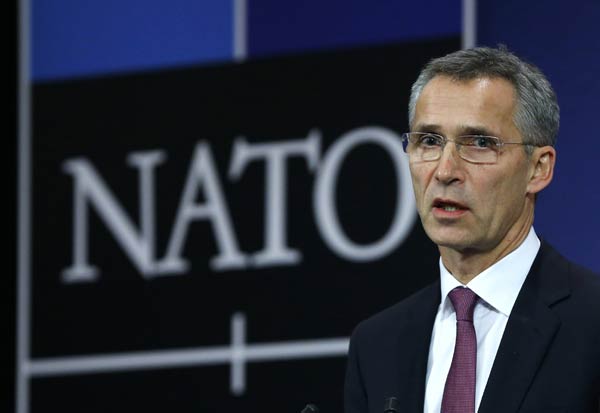Antimissile systems upsetting strategic balance
(China Daily) Updated: 2016-05-19 07:24
 |
|
NATO Secretary General Jens Stoltenberg speaks at the Alliance's headquarters during a NATO foreign ministers meeting in Brussels December 2, 2014. [Photo/Agencies] |
Following the inauguration of the United States' first antimissile defense system on European soil in Romania on May 12, NATO has begun building a second one in northern Poland. Beijing News commented on Wednesday:
It is no exaggeration to say that the nuclear contest between major powers, including the US and Russia, has reemerged in East Europe and East Asia, which poses a challenge to world peace. Moscow has described NATO's latest deployment in Romania as "a real threat to Russia's security".
In fact, Washington embarked on the antimissile system years ago. But in response to its shrinking strategic clout and NATO's military deployment in East Europe during the post-Cold War years, Russia has gradually stepped up its objections to the US' antimissile system in Europe, even threatening to deploy its own ballistic missiles on the border of the European Union to counter the move.
As a result, the Washington-backed system was temporarily suspended after US President Barack Obama assumed power in 2008.
The truth is, it was already deployed in East Europe before the P5+1 Iran nuclear deal was reached last summer, to "protect the US and Europe from Iran's possible attacks".
The just activated antimissile defense system in Europe, which the US claims is part of a global antimissile defense system and is not aimed at destroying Russia's nuclear missile potential, will undoubtedly deal a major blow to the current strategic balance.
Despite globalization and the free trade and cultural exchanges that have followed it, military might still plays a central role in balancing the major power relationships.
It is noteworthy that Washington's deployment of the antimissile defense system has been welcomed by some East European states, which are now at the forefront of NATO's confrontation with Russia.
- NATO ponders new ground force
- NATO warns Russia over 'airspace violation'
- Moscow warns of retaliation for NATO eastward expansion
- President to push for NATO deployments
- NATO allies back Turkish strikes on IS
- Reforms needed before membership of NATO
- NATO should not provide military aid in Ukraine crisis
- US, NATO mark end of 13-year war in Afghanistan

I’ve lived in China for quite a considerable time including my graduate school years, travelled and worked in a few cities and still choose my destination taking into consideration the density of smog or PM2.5 particulate matter in the region.











